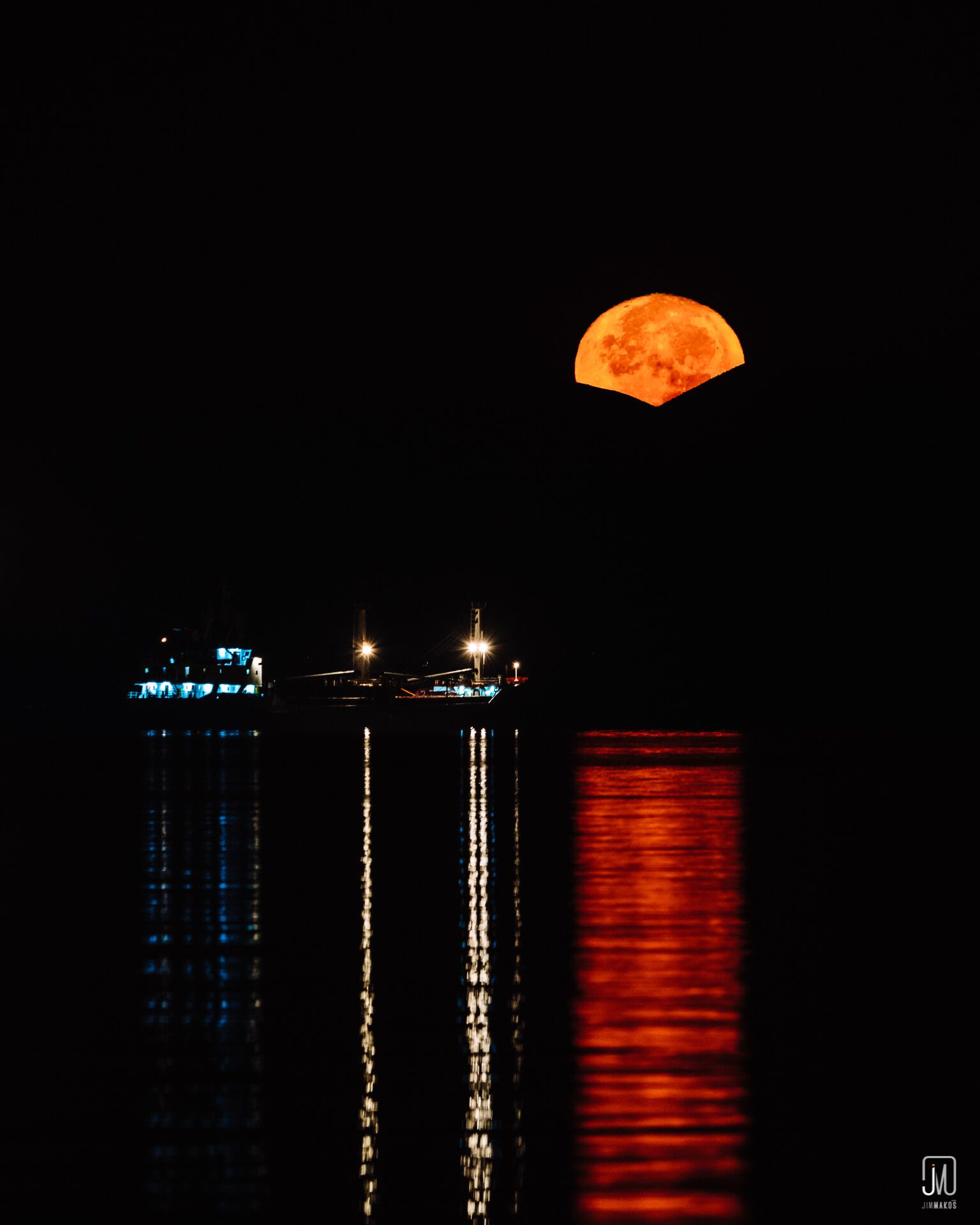I consider taking a photo of the moon one of the biggest challenges of an amateur photographer. Apart from the technical aspect and proper representation of Earth’s satellite on the digital film, there are hurdles that are usually met during the photoshoot, such as the picture’s composition which can change as fast as the moon’s quick movement! I often find myself moving around the tripod than changing my camera settings!
I’m known as Jim Makos online and I’m a photography enthusiast since I became a dad! At first, I learnt the technicals of photography by photographing my family, but quickly I began delving into all kinds of photography, so that I take good pictures that would accompany my articles online or even my social media posts. Eventually, photography and filmmaking’s bugs got so large inside me, that while I used to make fun of friends carrying their DSLR camera with a huge lens in every trip, my car’s boot is always filled up with photography and videography gear!

If you don’t want to take a picture of the moon as a tiny bright spot you have to invest in gear. Most probably you’re going to photograph the moon in the night or before sunrise, which means it will be dark. Low light is something that smartphone cameras cannot yet cope with. In addition, the moon will be the brightest part of the photograph and its main subject. That makes photographing it technically difficult, both in terms of exposure and focusing. A moon that we can’t make out its surface or a moon that is too bright or dark automatically makes it look vastly different than what you’re seeing at that moment but also of what we all have used to.

But even if you have the necessary gear and the huge telephoto lens so that you bring the moon closer in order for it to occupy a big part of the photograph it doesn’t necessarily mean you’re going to take a good picture. Especially if you are trying to photograph it during its best moments: the moonrise and moonset, since you can include your surroundings only then! Otherwise, it’s almost certain you’re going to take a picture of the moon in a black background which doesn’t tell us a story.
Much like the sun, when photographing the moon we have to take into account another important factor: the time. The moonrise and moonset do not last more than one hour and the moon’s movement on the sky will seem so fast that the photo’s composition may change by the minute! Proper planning is paramount, as long as we do not struggle technically. We don’t want to be at the right, planned position to take a photo of the moon only to find ourselves lost in the camera settings!
What I have done to be technically ready, is to photograph the moon many times when there’s no time pressure. While the moon is in an indifferent position in the sky and I’ve plenty of free time I’ll fiddle with the shutter speed, the aperture and the ISO and with different lenses as well, so that I understand how they affect the composition.
Also, with modern mirrorless cameras, we get to see in real time how the settings affect our next photograph, in contrast to older cameras that required us to take the photo and then check how the photograph changed.
I wouldn’t recommend moon photography to someone that is just starting out to dive into photography and videography. There are a lot of easier types of photography for them to practice and to learn the basics, along with getting familiar with the camera in their hands. Even when they become experienced enough, I’m sure that the first time they go out to shoot the moon it will feel that they are starting from scratch once again!





